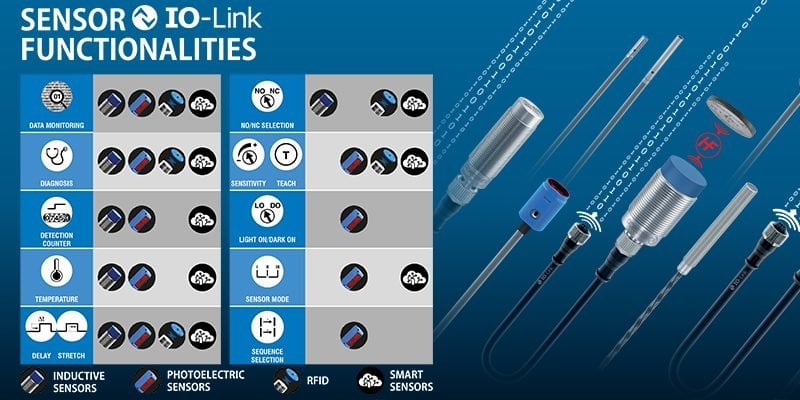www.ptreview.co.uk
14
'22
Written on Modified on
Contrinex Intelligent sensors for the 4th industrial revolution: Industry 4.0
Intelligent sensors are the fundamental building blocks of modern smart factories. Their essential role is to provide precise and reliable data to configure, control and optimize production lines. As the leader in intelligent sensor technology.

Fit for the future with Contrinex and IO-Link
Contrinex has always pushed the boundaries of sensor performance for optimal data quality and was also the forerunner in supporting IO-Link, the point-to-point communication protocol which has become the industry standard.
Intelligent sensors are the fundamental building blocks of modern smart factories. Their essential role is to provide precise and reliable data to configure, control and optimize production lines. As the leader in intelligent sensor technology, Contrinex has always pushed the boundaries of sensor performance for optimal data quality and was also the forerunner in supporting IO-Link, the point-to-point communication protocol which has become the industry standard.
Thanks to its ASIC technologies, Contrinex has been implementing IO-Link in all its inductive, photoelectric and RFID ranges. Simple configuration, readout through IO-Link and conventional switching outputs are available in one and the same versatile device.
Of course, the next generation is already here: smart sensors are now covering new grounds for predictive maintenance, production monitoring and measurement applications. Contrinex is fully committed to supporting industries in their journey towards industry 4.0 and will continue to bring out new tools to make customers successful.
By choosing Contrinex, users make themselves fit for the future.
IO-LINK FUNCTIONALITY*
Data monitoring
Switching state is monitored continuously. This not only monitors the signal itself, but also the state at 80% of the switching distance. One can therefore ensure that the sensor is not working at the limit of its specifications.
Diagnosis
The operating state of the sensor is checked. In case of open circuit, under-voltage, LC oscillator failure or installation of the wrong sensor, information is provided directly through IO-Link to enable fast repair, maintenance and replacement.
Detection counter
Detection events are counted. By registering the number of detections, it is possible to calculate the speed or number of parts. The counter can be reset by means of a unique IO-Link message.
Temperature
The internal temperature of the sensor is measured continuously, which provides an indication about the ambient temperature in the application. Moreover, the maximum temperature measured is saved for diagnosis and preventive maintenance purposes.
Switching timer
The timing of output switching can be configured. Depending on the needs of an application, output switching can be delayed or the duration stretched through programming.
NO/NC selection
The output switching mode can be selected as NO or NC. A single sensor type is configurable for the various needs of an application. This helps reduce the number of different sensor types required in stock.
Sensitivity and teach
The sensitivity of the sensor can be adjusted remotely by changing the threshold. Alternatively, the teach function can be used to adapt the threshold to the application. Calibrated sensing ranges ensure easy sensor replacement by uploading the existing sensitivity to the replacement sensor.
Light-ON/Dark-ON selection
The output switching mode can be selected as Light-ON or Dark-ON. A single sensor type is configurable for the various needs of an application. This helps reduce the number of different sensor types required in stock.
Sensor mode
Three different modes are selectable depending on the application needs: “Normal”, “Fast” and “Fine”. “Normal” mode is a good balance of speed and precision. In “Fast” mode, speed is higher and in “Fine” mode precision is higher.
Sequence selection
For cross-talk immunity with through-beam sensors, up to nine different emitting sequences can be selected to pair the emitter with the receiver.
*Functionalities may vary depending on series and sensor type
www.contrinex.com

